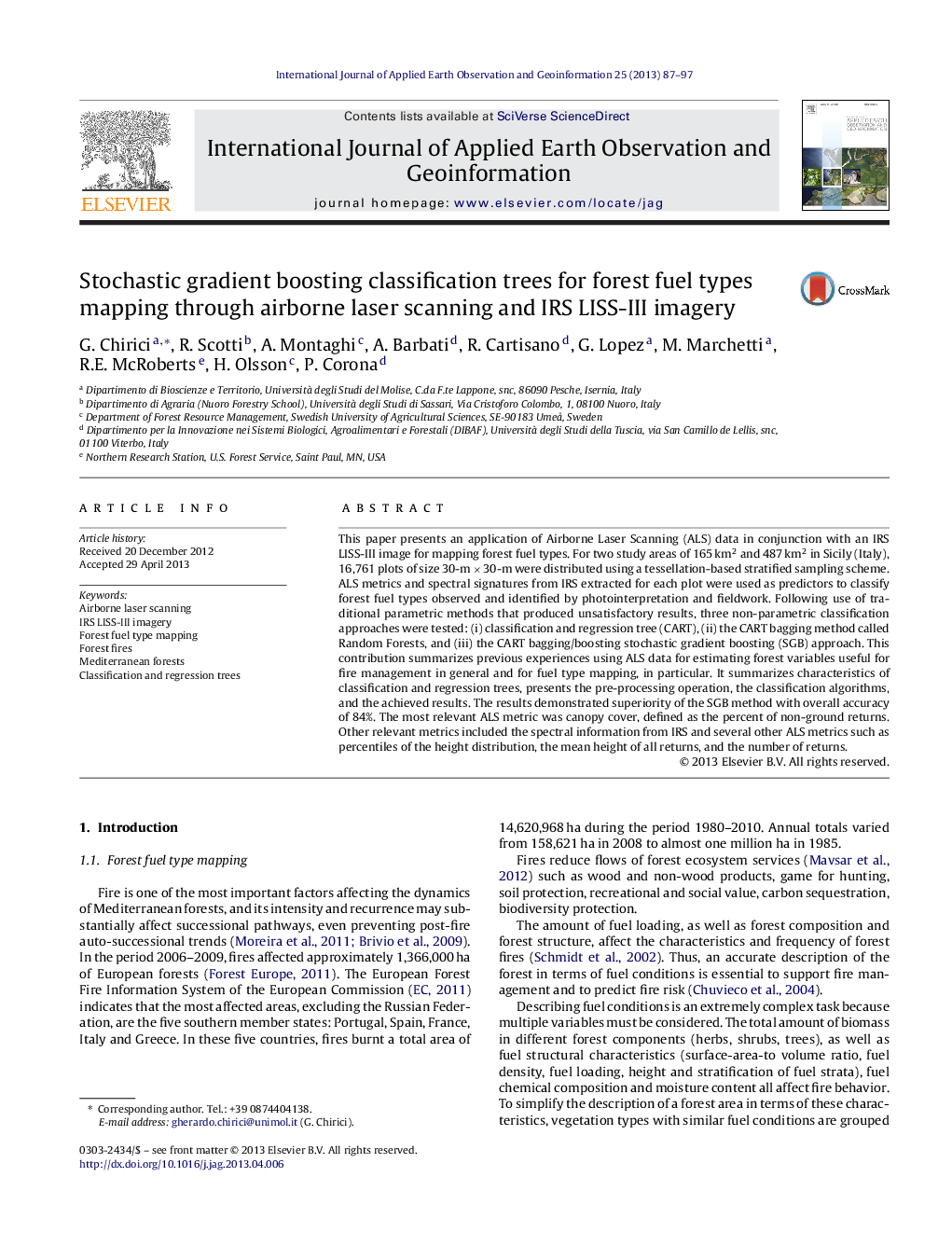| کد مقاله | کد نشریه | سال انتشار | مقاله انگلیسی | نسخه تمام متن |
|---|---|---|---|---|
| 4464828 | 1621835 | 2013 | 11 صفحه PDF | دانلود رایگان |

• Forest fuel types prediction in two test areas in Sicily (Italy).
• Predictors from airborne laser scanning (ALS) and IRS LISS-III optical multispectral data.
• Three classification and regression trees (CART) were tested.
• The results demonstrated the superiority of the stochastic gradient boosting method.
This paper presents an application of Airborne Laser Scanning (ALS) data in conjunction with an IRS LISS-III image for mapping forest fuel types. For two study areas of 165 km2 and 487 km2 in Sicily (Italy), 16,761 plots of size 30-m × 30-m were distributed using a tessellation-based stratified sampling scheme. ALS metrics and spectral signatures from IRS extracted for each plot were used as predictors to classify forest fuel types observed and identified by photointerpretation and fieldwork. Following use of traditional parametric methods that produced unsatisfactory results, three non-parametric classification approaches were tested: (i) classification and regression tree (CART), (ii) the CART bagging method called Random Forests, and (iii) the CART bagging/boosting stochastic gradient boosting (SGB) approach. This contribution summarizes previous experiences using ALS data for estimating forest variables useful for fire management in general and for fuel type mapping, in particular. It summarizes characteristics of classification and regression trees, presents the pre-processing operation, the classification algorithms, and the achieved results. The results demonstrated superiority of the SGB method with overall accuracy of 84%. The most relevant ALS metric was canopy cover, defined as the percent of non-ground returns. Other relevant metrics included the spectral information from IRS and several other ALS metrics such as percentiles of the height distribution, the mean height of all returns, and the number of returns.
Journal: International Journal of Applied Earth Observation and Geoinformation - Volume 25, December 2013, Pages 87–97